A focus on the natural world, from pandas to Tasmanian devils
Rebecca Spindler has spent close to 20 years working to conserve species and ecosystems. Upon completing her PhD on embryonic diapause, she took up a position at the Smithsonian Conservation Biology Institute, where, over the next seven years, she developed novel embryo culture systems for rare and endangered species. This meant spending five giant panda breeding seasons in the Wolong Nature Reserve helping to establish the Giant Panda Genome Resource Bank. During this same period, Rebecca established the Smithsonian’s Neotropical Carnivore Initiative with colleagues throughout the Americas, and headed a multidisciplinary project aimed at improving the health, reproduction and conservation of jaguars.
In 2004 she moved to Toronto Zoo to lead the reproductive department and initiate investigations into the role of genetic makeup on breeding strategies of wildlife species. Rebecca returned to Australia in 2007, joining the team at the Taronga Conservation Society Australia as Manager of Research and Conservation. She is currently investigating the role of genes that control self-recognition and immune response (the major histocompatibility complex, MHC) on mate choice in the Tasmanian devil, and working to develop a strategic gene bank for the Great Barrier Reef. Rebecca focuses the research efforts of Taronga’s 10 scientists on wildlife ecology, behaviour, reproduction, health and nutrition to inform best conservation decisions and practice.



